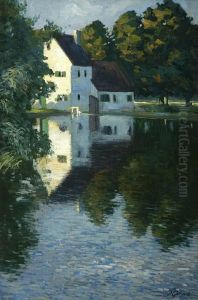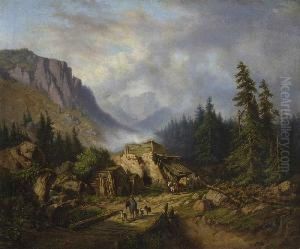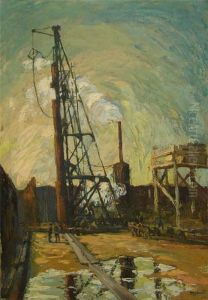Paul Gerhardt Paintings
Paul Gerhardt was a German theologian, Lutheran minister, and hymn writer, widely regarded as one of the greatest hymn writers in German history. His contributions to church music are significant, and his hymns are known for their depth of feeling and profound faith. Gerhardt was born on March 12, 1607, in Gräfenhainichen, a small town in the Electorate of Saxony, which is now part of Saxony-Anhalt, Germany. He grew up during a period of intense religious conflict, the Thirty Years' War, which profoundly affected his life and work.
Gerhardt studied theology at the University of Wittenberg, where he was influenced by the teachings of Martin Luther and the rich tradition of Lutheran hymnody. After completing his studies, he served as a tutor for a while before he began his pastoral career. His first pastoral appointment was in Mittenwalde, near Berlin, in 1651. It was during this time that he started to write hymns, which were initially meant for his own congregation but soon gained wider popularity.
In 1657, Paul Gerhardt was called to serve as a deacon at the Nikolaikirche in Berlin. His tenure there was marked by his pastoral care and his hymn writing. Despite the turbulent times and personal hardships, including the loss of his wife and some of his children, Gerhardt's faith remained steadfast, and this is reflected in the rich emotional quality of his hymns. Some of his most beloved hymns include 'O Sacred Head, Now Wounded', 'Awake, My Heart, with Gladness', and 'If God Himself Be for Me'.
However, his time in Berlin was also marked by conflict with the Elector of Brandenburg, who was enforcing a policy of religious conformity that Gerhardt could not, in good conscience, fully comply with. This led to his dismissal in 1666, after which he served in a few other pastoral roles before his final appointment in Lübben, where he served as archdeacon until his death on May 27, 1676.
Over his lifetime, Paul Gerhardt composed 123 hymns, many of which are still sung today. His hymns often express trust in God's providence and comfort in suffering, resonating with many Christians across denominational lines. His legacy endures in the liturgy of the Lutheran Church and among other Christian traditions, where his hymns continue to inspire and provide solace to believers around the world.


